Too much of the debate over Hamilton's streets is driven by familiarity with the status quo, fear of change and a tendency to rationalize existing beliefs instead of reasoning from evidence.
By Ryan McGreal
Published September 25, 2012
One of the more bizarre arguments against converting Hamilton's network of one-way streets to two-way is the claim that a two-way street network would somehow be less fault tolerant - that a disruption in traffic flow due, say, to a collision or lane closure would cause bigger problems on a two-way network than on a one-way network.
The reasoning seems to be that if, say, a one-way street with four lanes westbound is converted to two-way, that means there will only be two westbound lanes and any lane closure will lead to "gridlock".
There's a glaring problem with this reasoning: it completely neglects to take into account that in a two-way conversion of paired one-way streets, the parallel street will also be converted back to two way, providing an alternate route.
When a one-way network is converted to two-way, by definition the number of routes in a given direction doubles. That can only result in a more resilient network, since drivers have more ways of getting to a destination.
We don't even have to imagine how this might work. We only need to look at the recent closure of Cannon Street at James when a water main burst on September 13.
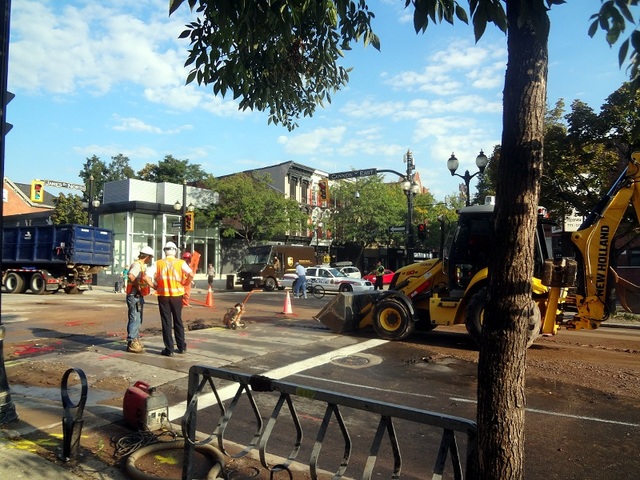
Water main break at James and Cannon
Cannon was closed completely for a while and then just one lane was open. Traffic moved slowly through the single lane, as it would if only a single lane was open on a two-way street.
However, it did not lead to "gridlock", even when the street was completely closed. Thanks to the 2010 conversion of York/Wilson Street to two-way, drivers on Cannon were able to go a block south, turn right onto Wilson and proceed west.
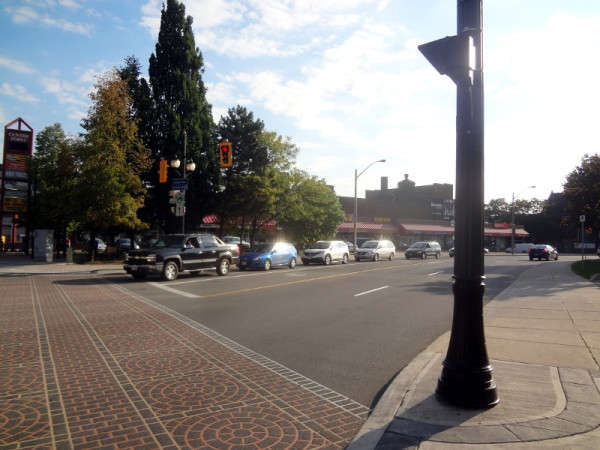
Westbound traffic on Wilson
Traffic flowed smoothly westbound on Wilson/York and provided the flexibility to allow cars to detour around the closure on Cannon.
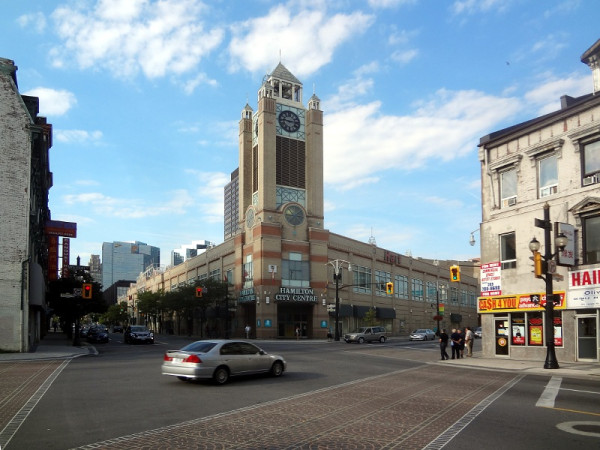
Traffic flowed smoothly westbound on York
Had Wilson remained one-way, drivers would have had to continue south another couple of blocks to King Street before they could turn westbound.
In the past, I have criticized the two-way conversion of York for being Two-Way-In-Name-Only (TWINO), since three lanes remain dedicated to eastbound traffic and only one lane runs westbound, and it is illegal to turn westbound onto York from James Street in either direction.
However, even in its attenuated form, this two-way street was able to serve the function of allowing traffic to route around a blocked intersection.
By the way, here is a shot of Wilson looking westbound from Catharine on a normal midday:
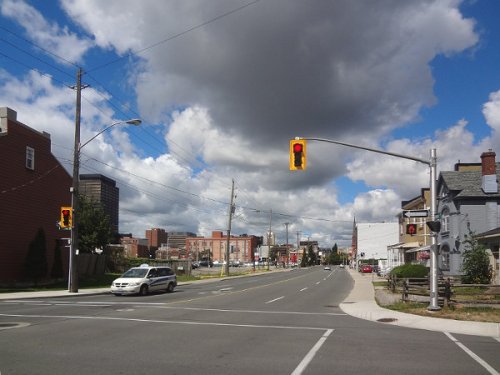
Wilson Street looking westbound from Catharine
This is one of the streets that we are expected to believe will become "gridlocked" if we convert our network to two-way.
But lest you claim that I'm cherry-picking a minor street instead of a major arterial, here is a video of Main Street at Caroline, where a lane is closed to traffic next to the old Revenue Canada building. This video was shot around lunchtime on a recent weekday.
Too much of the debate over Hamilton's streets is driven by familiarity with the status quo, fear of change and a tendency to rationalize existing beliefs instead of reasoning from evidence. We need to do better.
By jason (registered) | Posted September 25, 2012 at 09:26:02
I happened to be on Cannon, around Catharine at the time of the water main break. It delayed my trip by about 2 minutes in total, as I headed to Wilson, and over to Bay (why York doesn't stay two-way to Queen is baffling). Prior to wilson being converted we all would have snaked through back streets, or headed up to Barton way out of the way.
By PearlStreet (registered) | Posted September 25, 2012 at 13:37:02
I live near the corner of Wilson and Victoria Ave North where Wilson's one way starts. It seems to leave many confused and opens up to a four way east bound, inticing speeders to go faster and pass right next to J.C. Beemer Park's entrance. Why not keep the two way going towards Wentworth and beyond or at least past the park where pedestrians congrigate. Just dumb...
By Bill (registered) | Posted September 25, 2012 at 19:23:36 in reply to Comment 81235
You should pose your question to Mr. Walkability, http://www.raisethehammer.org/article/16...
By SpaceMonkey (registered) | Posted September 25, 2012 at 19:03:12
One of the more bizarre arguments against converting Hamilton's network of one-way streets to two-way is the claim that a ... collision or lane closure would cause bigger problems on a two-way network than on a one-way network.
Where was this argument made? If one way proponents are making this argument, it certainly isn't a strong one. I can't remember seeing that argument being made around this blog. Can anyone point me to where someone tried to argue the above?
What I have seen people suggest is that reducing the total number of lanes in the city could, likely, cause traffic disruption.
By seancb (registered) - website | Posted September 25, 2012 at 22:32:20 in reply to Comment 81242
But it won't. I mean, shutting down 10 lanes might. But we could lose one lane from every single e/w street (that has more than one lane) and there would not be gridlock. The only times there are traffic problems here are when a major street is completely closed off, and during occasional big events (and even then, the traffic delay is localized and minimal). Our roads are horribly overbuilt.
And besides all of that, two way proponents generally are calling for retention of most lanes anyways (maybe reducing by one here-and-there for a bike lane or parking lane). A two way conversion need not cause a loss of lanes, it just changes the direction of them.
The city needs to take a step WAY back and redesign the entire system in order to improve livability and reduce waste.
Is any of this still necessary given that Stelco now employs 1100 people instead of 25,000?

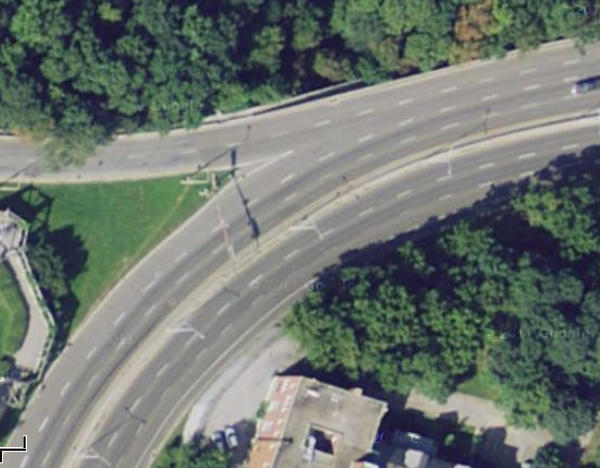

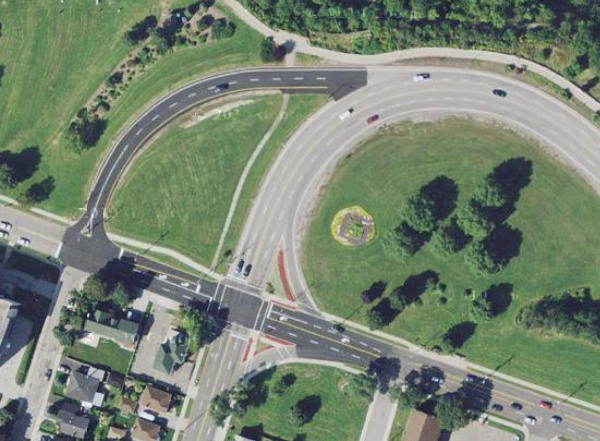
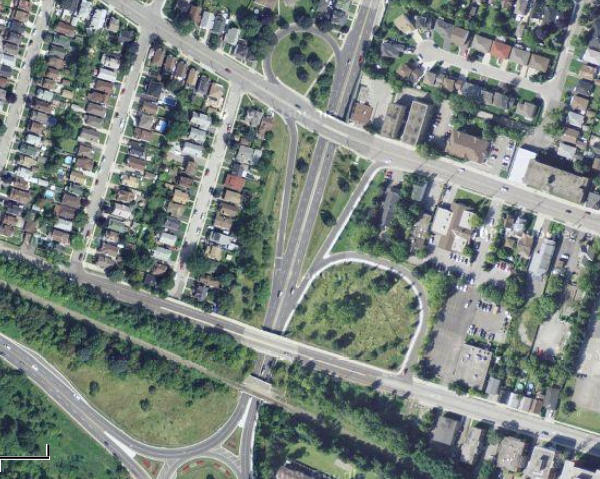


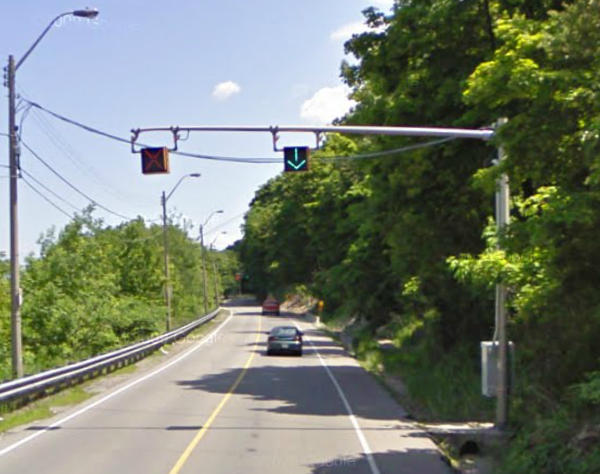

All of this costs us a HUGE amount in maintenance every single year and it is just horribly unnecessary and underutilized. This is a total waste of money.
I digress.
Two way conversion does not by definition mean losing lanes. But that being said, we can afford to lose some lanes. It would be good tax relief for us.
Comment edited by seancb on 2012-09-25 22:34:35
By jason (registered) | Posted September 25, 2012 at 22:48:39 in reply to Comment 81247
amazing how empty all of our streets are. We have the road network for a city of a few million people. All the highway style ramps everywhere are ridiculous. The Claremont Access might be one of the biggest offenders. A huge, elevated freeway of 5 lanes that carries enough traffic to be 3 lanes (1 down, 2 up). One downbound lane has been closed for ages and it still roars at 90km. This would be great for bike lanes and LRT up/down the escarpment.
Also, the whole system that involves downbound only in the morning and upbound only on Sherman Cut with the signals, barriers etc.... really?? As you say, the 40,000+ steel workers are gone. Just take down all the expensive signal stuff and let the Sherman Cut stay 1-lane each way 24-7.
Comment edited by jason on 2012-09-25 22:50:16
By jason (registered) | Posted September 25, 2012 at 22:19:34 in reply to Comment 81242
What I have seen people suggest is that reducing the total number of lanes in the city could, likely, cause traffic disruption.
Those folks might be interested in seeing the numbers:
By ddaearegydd (anonymous) | Posted October 01, 2012 at 19:31:23
There is a perfect way to both slow down traffic and improve flow, while at the same time improve pedestrian safety, and that is to:
Replace the intersections with ROUNDABOUTS.
The rest of the world uses them. Just us backward North Americans who don't.
Think they're dangerous? Then you can't drive properly.
You must be logged in to comment.
There are no upcoming events right now.
Why not post one?